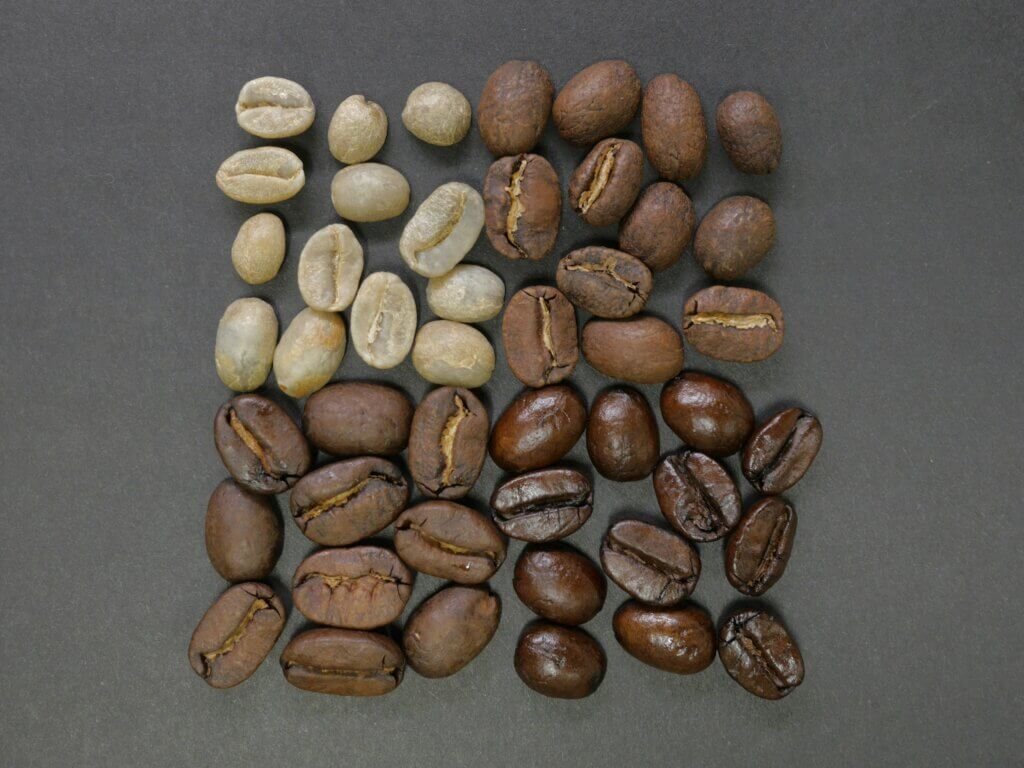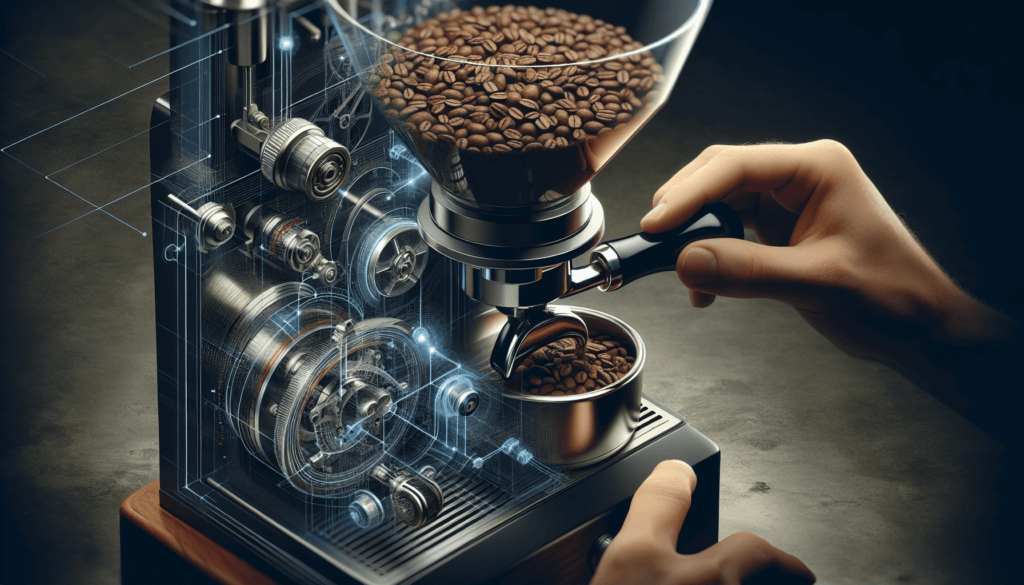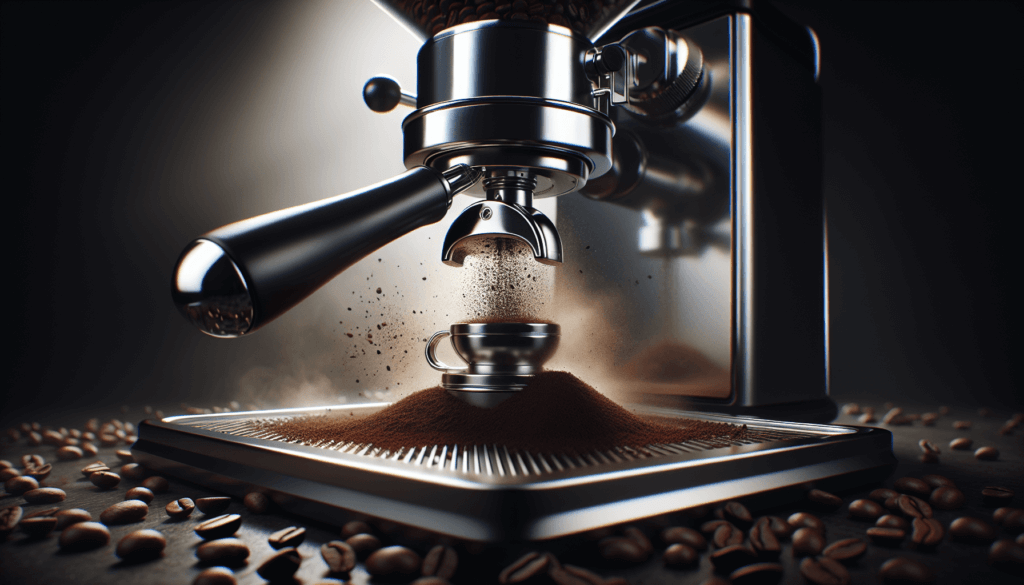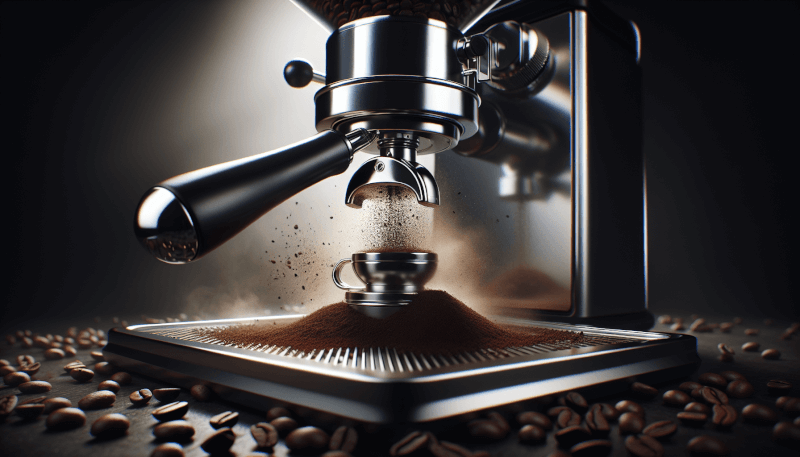Have you ever wondered about the secret behind brewing the perfect cup of espresso? Look no further than the science behind perfecting your espresso grinding settings. In this article, we will explore the intricacies of finding the optimal grind size for extracting the fullest flavors from your beloved coffee beans. Whether you are a seasoned barista or a coffee enthusiast looking to elevate your home brewing game, understanding the science behind espresso grinding settings is the key to unlocking the ultimate espresso experience. So read on to discover the fascinating world of particle size distribution, extraction percentages, and how these factors impact the taste and quality of your espresso.
Understanding Grinding Consistency
The role of grinding consistency in espresso extraction
Grinding consistency plays a crucial role in the espresso extraction process. It refers to the uniformity of particle size in the coffee grounds produced by the grinder. Consistency ensures that each coffee particle has a similar surface area for the extraction process, resulting in a more balanced and flavorful cup of espresso. When the particle size is inconsistent, it leads to uneven extraction, with some particles being over-extracted and others under-extracted. This can result in a range of taste inconsistencies, including bitterness, acidity, and a lack of sweetness.
The importance of particle size distribution
Particle size distribution refers to the range of particle sizes present in the coffee grounds. It affects the extraction process as different particle sizes extract at different rates. An ideal particle size distribution ensures that the water flow through the coffee bed is even, leading to a more consistent and balanced extraction. A narrow particle size distribution results in a more uniform extraction, while a wide distribution can lead to uneven extraction. Achieving an optimal particle size distribution is essential for maximizing flavor extraction and producing a high-quality cup of espresso.
Factors affecting grinding consistency
Several factors can impact grinding consistency. One of the key factors is the grinder’s burr geometry, which determines the grinding mechanism and the resulting particle size distribution. The alignment and sharpness of the burrs also play a role in achieving a consistent grind. Other factors include the speed at which the coffee beans are fed into the grinder, the bean density, and the grinder’s retention. Each of these factors can affect the particle size distribution and overall grinding consistency, highlighting the importance of precise and controlled grinding parameters.
The Impact of Particle Size
How particle size affects flavor extraction
Particle size significantly influences flavor extraction during the brewing process. Fine particles tend to extract more quickly and intensify flavors, resulting in a stronger and more robust cup of espresso. On the other hand, coarser particles extract more slowly and produce a milder and less intense flavor profile. By adjusting the particle size, you can control the strength and intensity of flavors in your cup of espresso, allowing for customization based on personal preference.
The ideal particle size for espresso extraction
The ideal particle size for espresso extraction typically falls within a specific range. It should be fine enough to ensure efficient and thorough extraction, yet coarse enough to avoid clogging the espresso machine. The optimal particle size allows for a balanced extraction, maximizing desirable flavors while minimizing undesirable ones. Achieving this balance requires experimentation and adjustments to find the sweet spot that aligns with your taste preferences and equipment setup.
The relationship between particle size and extraction time
Particle size and extraction time are intricately connected. Finer particles result in a faster extraction as the increased surface area allows for more rapid water penetration. Conversely, coarser particles require a longer extraction time to fully extract the desired flavors from the coffee grounds. By understanding this relationship, you can adjust the particle size to control the extraction time and achieve the desired flavor profile in your espresso.

Grinding Settings and Extraction Yield
The influence of grind size on extraction yield
Grind size directly impacts the extraction yield, which refers to the amount of coffee dissolved into the water during the brewing process. Finer particles extract more readily, leading to a higher extraction yield, while coarser particles extract less, resulting in a lower yield. Achieving the desired extraction yield is crucial for obtaining the right balance of flavors in your espresso. By adjusting the grind size, you can fine-tune your extraction and ensure optimal taste and strength.
Finding the right grind size for desired extraction yield
To find the right grind size for your desired extraction yield, you need to experiment with different settings. Start with a moderate grind size and adjust incrementally until you achieve the desired taste and strength in your espresso. Pay attention to the extraction yield and make note of the corresponding grind size. Over time, you will develop an understanding of how different grind settings affect the extraction yield, allowing you to consistently reproduce your preferred cup of espresso.
The effect of grind size on brew ratio
Brew ratio refers to the ratio of dry coffee grounds to the final volume of brewed espresso. The grind size influences the brew ratio by affecting the extraction yield. Finer grind sizes tend to require less coffee grounds to achieve the desired strength due to their higher extraction capability. Conversely, coarser grind sizes often require a higher coffee-to-water ratio to compensate for the lower levels of extraction. By adjusting the grind size, you can manipulate the brew ratio to meet your taste preferences and achieve the desired strength in your espresso.
Adjusting Grind Size for Taste Profile
Controlling brew strength with grind size
Grind size plays a key role in controlling the brew strength of your espresso. A finer grind size generally yields a stronger and more concentrated cup, while a coarser grind size produces a milder and less intense brew. By adjusting the grind size, you can modulate the strength of your espresso to match your personal taste preferences. It is important to note that brew strength is subjective, and finding your ideal grind size may require experimentation and adjustments.
Fine-tuning flavors with grind adjustments
Grind adjustments allow for fine-tuning the flavors in your espresso. By altering the grind size, you can influence the extraction rate of different flavor compounds in the coffee grounds. For example, a finer grind size may enhance the acidity and brightness of your espresso, while a coarser grind size can emphasize sweetness and body. It is crucial to experiment and be mindful of how small changes in grind size can impact the overall flavor profile, allowing you to achieve the desired nuances in your cup.
The relationship between grind size and acidity/bitterness
Grind size has a notable impact on the acidity and bitterness of your espresso. Finer grind sizes tend to extract more quickly, leading to higher levels of acidity. On the other hand, coarser grind sizes result in a slower extraction and lower acidity. Furthermore, finer grinds can also increase the chances of over-extraction, which can introduce bitterness into the cup. By understanding this relationship, you can adjust the grind size to enhance or balance the acidity and bitterness in your espresso, creating a more harmonious and enjoyable flavor profile.

Temperature and Extraction
The impact of temperature on espresso extraction
Temperature plays a crucial role in the espresso extraction process. It affects the solubility of various compounds in coffee, including flavors, oils, and acids. Higher temperatures generally lead to faster extraction, while lower temperatures slow down the process. However, excessively high temperatures can result in an over-extracted and bitter espresso, while lower temperatures may produce an under-extracted and sour cup. Finding the optimal temperature range for flavor extraction is essential for achieving a well-rounded and balanced espresso.
Optimal temperature range for flavor extraction
The optimal temperature range for flavor extraction in espresso typically falls between 195°F (90°C) and 205°F (96°C). Within this range, the water is able to extract a wide range of flavors from the coffee grounds without introducing excessive bitterness or sourness. It is important to note that different coffee beans may have specific temperature requirements, and experimentation with temperature adjustments can lead to further customization of flavor profiles.
Effects of temperature on extraction yield
Temperature also impacts the extraction yield, similar to grind size. Higher temperatures tend to lead to higher extraction yields, meaning more coffee compounds are dissolved in the water. Lower temperatures result in lower extraction yields, potentially leading to under-extraction and a weaker cup of espresso. By controlling the temperature, you can influence the extraction yield and achieve the desired balance of flavors and strength in your espresso.
Time and Extraction
The role of brew time in espresso extraction
Brew time refers to the duration for which water is in contact with the coffee grounds during the extraction process. It impacts the rate at which flavors are extracted and determines the overall strength and taste of the espresso. The appropriate brew time varies depending on factors such as grind size, coffee freshness, and personal preference. Optimizing brew time is crucial for consistent and well-extracted espresso.
Understanding the ideal extraction time
The ideal extraction time for espresso typically ranges between 25 to 30 seconds. During this time, the water interacts with the coffee grounds, dissolving and extracting desirable flavors. Beyond this range, over-extraction or under-extraction may occur, resulting in imbalanced and less enjoyable espresso. Monitoring the extraction time and making adjustments to variables such as grind size and brew ratio can help achieve the ideal extraction within this time frame.
The relationship between grind size and brew time
Grind size plays a significant role in determining the brew time. Finer grind sizes tend to extract more quickly, requiring shorter brew times. Conversely, coarser grind sizes necessitate longer brew times to achieve optimal extraction. By adjusting the grind size, you can manipulate the brewing time to achieve the desired flavor profile. It is crucial to strike a balance, as both over-extraction and under-extraction can negatively impact the taste of your espresso.

Distribution and Tamping Techniques
The importance of even coffee distribution in the basket
Even coffee distribution within the filter basket is essential for consistent and uniform extraction. When the coffee grounds are evenly distributed, the water flows through the bed of coffee in a more uniform manner. This minimizes the chances of channeling, where water takes the path of least resistance, resulting in uneven extraction and an imbalanced cup of espresso. Proper distribution ensures that all the coffee particles are equally exposed to the water, promoting consistent flavor extraction.
Tamping techniques for optimal extraction
Tamping is the process of compressing the coffee grounds in the filter basket before extraction. It ensures that the water flows through the coffee bed evenly. A consistent and level tamp helps to prevent uneven extraction and encourages a more balanced flavor profile. Tamping pressure should be firm and even, allowing for sufficient resistance during the extraction. Developing a consistent tamping technique is crucial for reproducible and high-quality espresso.
Addressing channeling through distribution and tamping
Channeling is a common issue in espresso extraction, where high-pressure water creates pathways through the coffee bed, resulting in uneven extraction. Proper distribution and tamping techniques can help mitigate channeling. Ensuring even coffee distribution and an even tamp minimizes gaps and inconsistencies in the coffee bed, reducing the chances of channeling. By addressing these factors, you can promote more consistent extraction and achieve a more satisfying cup of espresso.
Brew Pressure and Extraction
The role of brew pressure in espresso extraction
Brew pressure is another critical factor in the espresso extraction process. It is the pressure at which water passes through the coffee grounds during extraction. The right brew pressure helps optimize the extraction process by evenly saturating the coffee bed and facilitating the extraction of desirable flavors. Insufficient brew pressure can result in under-extraction, while excessive pressure can lead to over-extraction and bitterness. Balancing brew pressure is crucial for extracting the full range of flavors in your espresso.
Optimal brew pressure range for flavor extraction
The optimal brew pressure range for espresso extraction is typically between 8 to 9 bars. Within this range, the water can sufficiently extract flavors without over- or under-extracting the coffee grounds. Different espresso machines may have variations in the recommended brew pressure range, so it is advisable to consult the manufacturer’s instructions. Monitoring and adjusting the brew pressure can help achieve balanced and well-extracted espresso.
Effects of brew pressure on extraction yield
Similar to other variables, brew pressure affects the extraction yield. Higher brew pressures generally result in higher extraction yields, as more coffee compounds are dissolved in the water. Lower brew pressures can lead to lower extraction yields, potentially resulting in under-extraction. By controlling the brew pressure, you can manipulate the extraction yield and achieve the desired strength and flavor profile in your espresso.

Evaluating Espresso Quality
Defining espresso quality parameters
Evaluating espresso quality involves assessing various parameters that contribute to a satisfactory cup. These parameters include taste, aroma, and mouthfeel. Taste refers to the overall flavor balance, including acidity, sweetness, bitterness, and any other desirable or undesirable notes. Aroma encompasses the aromatic compounds released from the coffee, providing insight into the coffee’s origin and roast profile. Mouthfeel refers to the texture and body of the espresso, examining its viscosity and overall tactile experience. By evaluating these parameters, you can determine the quality and enjoyment of your espresso.
Using taste, aroma, and mouthfeel to assess quality
Taste, aroma, and mouthfeel are essential elements for assessing the quality of espresso. To evaluate taste, focus on the balance of flavors, noting any over- or under-extracted characteristics. Pay attention to the aroma to identify specific scent notes and the overall pleasantness of the coffee’s fragrance. Consider mouthfeel, noting the texture and body of the espresso, and how it interacts with your palate. By analyzing these aspects, you can develop a comprehensive understanding of the quality and characteristics of your espresso.
Measuring extraction percentage and TDS for evaluating espresso
Measuring extraction percentage and total dissolved solids (TDS) are objective methods for evaluating espresso quality. Extraction percentage refers to the proportion of coffee grounds extracted into the final beverage. Measuring extraction percentage provides insights into the efficiency of the extraction process and can help optimize brewing parameters. TDS refers to the concentration of dissolved solids in the espresso, including coffee compounds such as flavors, oils, and acids. Measuring TDS allows for quantifying the strength and overall composition of the espresso, providing valuable data for assessing and adjusting extraction parameters.
Maintaining Consistency and Reproducibility
The importance of consistency for espresso quality
Consistency is crucial for maintaining the quality and taste of your espresso. By ensuring that every variable, including grinding, dosing, tamping, brew temperature, and pressure, is controlled and executed consistently, you can reproduce the desired flavor profile and avoid taste variations. Consistency allows you to develop a reliable and enjoyable espresso experience, ensuring that each cup consistently reflects your preferred taste preferences.
Steps to ensure consistency in grinding settings
To maintain consistency in grinding settings, follow a systematic approach. Start by selecting a reliable grinder that produces consistent particle size and distribution. Calibrate the grinder regularly, ensuring the burrs are sharp and properly aligned. Develop a workflow that includes weighing and dosing your coffee accurately. Regularly evaluate and adjust your grind size, brew time, and other brewing parameters to ensure consistent extraction. By practicing these steps meticulously, you can achieve and maintain consistency in your espresso grinding settings.
Reproducibility for consistent espresso extraction
Reproducibility is the ability to consistently recreate a desired espresso extraction. By carefully documenting and experimenting with variables such as grind size, brew ratio, brew time, water temperature, and other parameters, you can optimize your extraction for specific flavors. Keep a detailed log of the variables used for each extraction and note any adjustments made to achieve desired results. By referencing this log, you can reproduce successful extractions and continue to refine your process for consistently excellent espresso.



